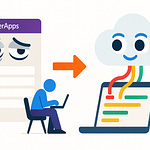Have you ever written a LINQ query that worked perfectly in C#, but when you checked the SQL it generated, you wondered—how on earth did it get to *that*? In this session, you’ll learn three things in particular: how expression trees control translation, how caching shapes performance and memory use, and what to watch for when null logic doesn’t behave as expected.
If you’ve suspected there’s black-box magic inside Entity Framework Core, the truth is closer to architecture than magic. EF Core uses a layered query pipeline that handles parsing, translation, caching, and materialization behind the scenes. First we’ll look at how your LINQ becomes an expression tree, then the provider’s role, caching, null semantics, and finally SQL and materialization.
And it all starts right at the beginning: what actually happens the moment you run a LINQ query.
From LINQ to Expression Trees
When you write a LINQ query, the code isn’t automatically fluent in SQL. LINQ is just C#—it doesn’t know anything about databases or tables. So when you add something like a `Where` or a `Select`, you’re really calling methods in C#, not issuing commands to SQL. The job of Entity Framework Core is to capture those calls into a form it can analyze, before making any decisions about translation or execution.
That capture happens through expression trees. Instead of immediately hitting the database, EF Core records your query as a tree of objects that describe each part. A `Where` clause doesn’t mean “filter rows” yet—it becomes a node in the tree that says “here’s a method call, here’s the property being compared, and here’s the constant value.” At this stage, nothing has executed. EF is simply documenting intent in a structured form it can later walk through.
One way to think about it is structure before meaning. Just like breaking a sentence into subject and verb before attempting a translation, EF builds a tree where joins, filters, projections, and ordering are represented as nodes. Only once this structure exists can SQL translation even begin.
EF Core depends on expression trees as its primary mechanism to inspect LINQ queries before deciding how to handle them. Each clause you write—whether a join or a filter—adds new nodes to that object model. For example, a condition like `c.City == "Paris"` becomes a branch with left and right parts: one pointing to the `City` property, and one pointing to the constant string `"Paris"`. By walking this structure, EF can figure out what parts of your query map to SQL and what parts don’t.
Behind the scenes, these trees are not abstract concepts, but actual objects in memory. Each node represents a method call, a property, or a constant value—pieces EF can inspect and categorize. This design gives EF a reliable way to parse your query without executing it yet. Internally, EF treats the tree as a model, deciding which constructs it can send to SQL and which ones it must handle in memory.
This difference explains why some queries behave one way in LINQ to Objects but fail in EF. Imagine you drop a custom helper function inside a lambda filter. In memory, LINQ just runs it. But with EF, the expression tree now contains a node referring to your custom method, and EF has no SQL equivalent for that method. At that point, you’ll often notice a runtime error, a warning, or SQL falling back to client-side evaluation. That’s usually the signal that something in your query isn’t translatable.
The important thing to understand is that EF isn’t “running your code” when you write it. It’s diagramming it into this object tree. And if a part of that tree doesn’t correspond to a known SQL pattern, EF either stops or decides to push that part of the work into memory, which can be costly. Performance issues often show up here—queries that seem harmless in C# suddenly lead to thousands of rows being pulled client-side because EF couldn’t translate one small piece.
That’s why expression trees matter to developers working with EF. They aren’t just an internal detail—they are the roadmap EF uses before SQL even enters the picture. Every LINQ query is first turned into this structural plan that EF studies carefully. Whether a query succeeds, fails, or slows down often depends on what that plan looks like.
But there’s still one more step in the process. Once EF has that expression tree, it can’t just ship it off to the database—it needs a gatekeeper. Something has to decide whether each part of the tree is “SQL-legal” or something that should never leave C#. And that’s where the next stage comes in.
The Gatekeeper: EF Core’s Query Provider
Not every query you write in C# is destined to become SQL. There’s a checkpoint in the middle of the pipeline, and its role is to decide what moves forward and what gets blocked. This checkpoint is implemented by EF Core’s query provider component, which evaluates whether the expression tree’s nodes can be mapped to SQL or need to be handled in memory. You can picture the provider like a bouncer at a club. Everyone can show up in line, but only the queries dressed in SQL-compatible patterns actually get inside. The rest either get turned away or get redirected for client-side handling.
It’s not about being picky or arbitrary. The provider is enforcing the limits of translation. LINQ can represent far more than relational databases will ever understand. EF Core has to walk the expression tree and ask of each node: is this something SQL can handle, or is it something .NET alone can execute? That call gets made early, before SQL generation starts, which is why you sometimes see runtime errors up front instead of confusing results later.
For the developer, the surprise often comes from uneven support. Many constructs map cleanly—`Where`, `Select`, `OrderBy` usually translate with no issue. Others are more complicated. For example, `GroupBy` can be more difficult to translate, and depending on the provider and the scenario, it may either fail outright or produce SQL that isn’t very efficient. Developers see this often enough that it’s a known caution point, though the exact behavior depends on the provider’s translation rules.
The key thing the provider is doing here is pattern matching. It isn’t inventing SQL on the fly in some magical way. Instead, it compares the expression tree against a library of translation patterns it understands. Recognized shapes in the tree map to SQL templates. Unrecognized ones either get deferred to client-side execution or rejected. That’s why some complex queries work fine, while others lead to messages about unsupported translation. The decision is deterministic—it’s all about whether a given pattern has a known, valid SQL output.
This is also the stage where client-side evaluation shows up. If a part of the query can’t be turned into SQL, EF Core may still run it in memory after fetching the data. At first glance, that seems practical. SQL gives you the data, .NET finishes the job. But the cost can be huge. If the database hands over thousands or even millions of rows just so .NET can filter them afterward, performance collapses. Something that looked innocent in a local test database can stall badly in production when the data volume grows.
Developers often underestimate this shift. Think of a query that seems perfectly fine while developing against a dataset of a few hundred rows. In production, the same query retrieves tens of thousands of records and runs a slow operation on the application server. That’s when users start complaining that everything feels stuck. The provider’s guardrails matter here, and in many cases it’s safer to get an error than to let EF try to do something inefficient.
For anyone building with EF, the practical takeaway is simple: always test queries against real or representative data, and pay attention to whether performance suddenly nosedives in production. If it feels fast locally but drags under load, that’s often a sign the provider has pushed part of your logic to client-side evaluation. It’s not automatically wrong, but it is a signal you need to pay closer attention.
So while the provider is the gatekeeper, it isn’t just standing guard—it’s protecting both correctness and performance. By filtering what can be translated into SQL and controlling when to fall back to client-side execution, it keeps your pipeline predictable. At the same time, it’s under constant pressure to make these decisions quickly, without rewriting your query structure from scratch every time. And that’s where another piece of EF Core’s design becomes essential: a system to remember and reuse decisions, rather than starting from zero on every request.
Caching: EF’s Secret Performance Weapon
Here’s where performance stops being theoretical. Entity Framework Core relies on caching as one of its biggest performance tools, and without it, query translation would be painfully inefficient. Every LINQ query starts its life as an expression tree and has to be analyzed, validated, and prepared for SQL translation. That work isn’t free. If EF had to repeat it from scratch on every execution, even simple queries would bog down once repeated frequently.
To picture what that would mean in practice, think about running the same query thousands of times per second in a production app. Without caching, EF Core would grind through full parsing and translation on each call. The database wouldn’t necessarily be the problem—your CPU would spike just from EF redoing the prep work. This is why caching isn’t an optional optimization; it’s the foundation that makes EF Core workable at real-world scale.
So how does it actually help? EF Core uses caching to recognize when a query shape it has already processed shows up again. Instead of re-analyzing the expression tree node by node, EF can reuse the earlier work. That means when you filter by something like `CustomerId`, the first run takes longer while EF figures out how to map that filter into SQL. After that, subsequent executions with different parameter values are fast because the heavy lifting has already been stored. In short: first pass builds the plan, later passes reuse it.
Now, the details of exactly how this cache is structured vary by EF Core version and provider, but the general principle is consistent. The cache keeps track of repeated query shapes. When the model changes—say, you add a property to an entity—the cached items are no longer valid and EF clears them. This prevents mismatched SQL from ever being reused. The implementation specifics, such as multiple caching layers or eviction rules, are tied to version and configuration details and should be checked in official EF Core documentation.
From a developer’s perspective, the result is straightforward. Queries run noticeably faster after the first execution. That’s caching at work. The benefit is easy to underestimate because the speed increase feels invisible until you turn caching off or hit a pattern that doesn’t reuse as efficiently. Once you realize what it’s doing, you start to see why EF can stay responsive even under heavy load.
But caching is not a free ride. Every cache entry takes memory, and applications with a high number of unique query shapes can see memory usage climb. If you rely heavily on dynamically composed queries—string-building predicates, runtime-generated projections, or code that produces slightly different shapes every call—you’ll generate many cache entries that never get reused. That’s when the cache becomes a liability instead of an asset. Developers should keep an eye out for that pattern. Fewer, more consistent query shapes make the most of caching and avoid wasting memory.
The trick for teams is recognizing that cached queries are both a performance advantage and a potential memory cost. You want to take advantage of caching on repetitive work—queries you know will run thousands of times—but be aware of how your application builds queries. If you’re generating too many unique ones, the cache has to hold on to shapes that are unlikely to be seen again. That can add unexpected weight to your system, especially at scale.
In practice, the best advice is to let EF Core handle caching automatically but to be intentional about how you write queries. If you notice memory pressure in your application while database load looks normal, consider whether the issue might be related to lots of cached query shapes. It’s not the first place developers look, but it’s often a silent contributor. Optimizing query patterns can be as important as optimizing the database itself.
Caching often explains why EF queries feel fast after that initial delay. It’s doing the same job once, then skipping overhead on repeats. Simple, but powerful. Still, even when query execution feels smooth, another source of subtle bugs lurks just around the corner—handling `null` values. That’s where EF Core has to bridge two very different definitions of “nothing,” and it’s a problem developers run into all the time.
Null Semantics: When 'Nothing' Means Different Things
In most everyday coding, developers can treat null as a simple concept, but the reality is more complicated once EF Core sits between C# and a SQL database. This is where the issue of null semantics takes center stage: the rules you think you’re applying in .NET don’t always mean the same thing when the database evaluates them.
In C#, `null` is straightforward. A missing object reference, an unassigned string, a property that hasn’t been set—all amount to the same thing. But SQL operates differently. It doesn’t use `null` in a way that lines up directly with .NET. SQL treats it more like an “unknown” value, which affects how comparisons behave. For instance, in SQL, writing `Column = NULL` will not behave like a true/false test. Instead, it produces special handling that requires `IS NULL` checks. This is a critical distinction developers need to keep in mind.
A quick example makes the difference clear. Suppose you write:
`var query = customers.Where(c => c.Name == null);`
Run that query in-memory against a list of customer objects, and you’ll reliably get back those whose `Name` is actually null. Translate that same logic into SQL without adjustments, and you’d expect to see `WHERE Name = NULL`. In practice, that would not return any rows at all. The correct SQL form would be `WHERE Name IS NULL`. Being mindful of this difference matters. As a developer, it’s a good habit to check the SQL output when your LINQ depends on null comparisons, especially to avoid surprises when moving to production data.
This mismatch is at the root of why null queries sometimes behave so strangely in EF Core. If left uncorrected, something that seems predictable in C# could silently yield no results in the database. Occasionally, it might even give results that look fine in small tests but fail in real scenarios where nulls appear more often. That’s an easy way for subtle bugs to sneak in without warning.
To reduce this risk, EF Core doesn’t simply pass your null comparisons through. Instead, it applies rules to keep .NET and SQL behavior aligned. For equality checks, EF will usually adjust them into `IS NULL` or `IS NOT NULL` conditions. For more involved predicates, the pipeline often performs compensating transformations so database results stay in sync with what .NET runtime logic would have done. The exact internals of these adjustments depend on version and provider, but the guiding principle is consistent: preserve developer expectations by normalizing null logic.
However, this alignment comes at a cost. Those compensating transformations can make SQL queries longer and more complex than what it seemed you wrote. EF is prioritizing correctness over simplicity, sometimes at the expense of efficiency. That’s why you may occasionally see generated SQL with extra conditions that don’t match your clean LINQ statement. It’s EF quietly ensuring you don’t wake up to inconsistent results later. The complexity of the generated query is often the visible side effect of keeping null semantics safe across two systems with conflicting definitions.
What matters most for developers is recognizing the potential risk in null handling. If a query appears odd, slow, or overly complex, null checks are a good place to start troubleshooting. A short but practical takeaway is this: if a query involving nulls behaves oddly, check for translation differences or hidden rewrites. These are not mistakes so much as protective guardrails EF Core has built in.
The real danger is assuming harmless null checks behave the same in both environments. They don’t—and that can surface as bugs that only appear with production data, not in a tidy test set. For example, you might think a filter excludes nulls until you notice certain records mysteriously missing. That kind of silent mismatch can be one of the hardest issues to track down unless you’ve validated the generated SQL against real data volumes and patterns.
So while null semantics are a headache, they also represent one of EF Core’s most important interventions. By compensating for the mismatch, EF helps smooth over a gap that could otherwise cause unpredictable failures. Developers may not like the extra SQL that shows up in the process, but without it, the results would be unreliable.
Having dealt with nulls, EF is now carrying a query that’s been parsed, filtered through the provider, cached, and adjusted to keep logic consistent. The final question is what happens next—how does this prepared query become a SQL command that the database can actually execute, and how is the raw data turned back into usable .NET objects for us?
SQL Generation and Materialization
The last stage of the pipeline is SQL generation and materialization—the point where all that preparation either pays off or falls apart. Everything up to now has been about shaping intent, validating patterns, and protecting consistency. But queries only become useful when EF Core can turn that intent into a SQL command your database understands, and then reshape the flat results into rich objects your code can actually work with.
Two moving parts do the bulk of this work: the SQL generator and the materializer. They solve opposite problems but depend on each other. SQL generation is provider-aware: provider components influence how queries are expressed for a given database dialect. Materialization then takes the rows that come back and builds entities and projections in .NET. Neither side on its own is enough. SQL generation ensures the database can run the query; materialization ensures the results make sense for your application.
That back-and-forth is why this stage feels like translation in two directions. A LINQ filter that looked harmless in C# needs to be written as valid SQL for PostgreSQL, SQL Server, or whichever provider you’re using. When the database replies, EF receives nothing more than rows and columns, which it cannot simply hand to you without context. Your expectation is that you’ll receive entities, with navigation properties wired up, typed values in the right places, and relationships intact. Bridging that gap is what these steps are designed to do.
Think about it with a simple example. If you’ve written a query that includes related entities—say an `Order` with its `OrderLines`—you don’t want to see half a dozen partial rows and stitch them together manually. You expect to see an `Order` object that contains a populated `OrderLines` collection. That’s materialization in action: EF reconstructs a full object graph from sets of rows. And here’s a practical pointer—if you’re noticing duplicate tracked objects or missing navigation values, it often comes down to how those joins were shaped and how EF materialized the results.
SQL generation itself highlights EF’s dependency on providers. The framework doesn’t attempt to hard-code every syntax detail. Instead, providers supply the logic for their database. That means the same LINQ query might render slightly different SQL in different environments. Brackets might appear on SQL Server, quoted identifiers on PostgreSQL, different type coercions elsewhere. These variations matter because they determine whether the query is actually valid for the target database. This principle is worth confirming against the EF Core docs for the specific version and provider you’re using, since capabilities evolve.
On the materialization side, EF has to handle more than just simple mappings. It needs to line up database column types with .NET types, enforce conversion when needed, and fix up foreign keys so relationships turn into real object references. Projections add another twist. A query that asks for a custom DTO or an anonymous type must be assembled directly from the result set without ever creating a full entity. That flexibility is where developers feel EF adapting to their needs, but it adds real complexity to the engine underneath.
There are also cases where the materializer tracks properties you didn’t explicitly define. Features like shadow properties or lazy-loading hooks fit here, but these vary by EF Core version and provider, so check the documentation of your target environment before relying on them. What matters most is that materialization manages to hide this entire process. Developers see a clean object model, while EF has spent considerable effort balancing performance with correctness.
Relationships give a good snapshot of the hidden work involved. Instead of handing you rows that reference each other by ID, EF resolves those references into navigation properties. The tip here is simple: if navigation properties are empty or inconsistent, revisiting how you shape the query—especially with `Include` or projection choices—can often resolve it.
So in practice, SQL generation and materialization give EF its most visible impact. These are the stages that make the difference between a developer-friendly experience and data plumbing that would otherwise consume hours of manual mapping. When you query with EF, you get back something that feels natural in .NET not because SQL gave you objects, but because EF rebuilt them that way.
This is why the process often feels like magic. Two different engines—one fluent in database dialects, the other fluent in .NET objects—hand off work seamlessly so you see only the finished result. But it isn’t magic at all. It’s a pipeline deliberately layered to keep performance, correctness, and usability in balance. And that careful layering is the real story behind Entity Framework Core.
Conclusion
What holds EF Core together isn’t magic but a chain of deliberate steps—expression trees, query providers, caching, null handling, and materialization—all shaping how your queries perform and behave. Knowing these moving pieces makes a difference, because a query that seems harmless in code can perform very differently under load.
As practical next steps, keep three things in mind: check generated SQL for complex expressions, watch for signs of client-side evaluation, and monitor how diverse your query shapes are to avoid unnecessary cache growth.
Looking ahead, it’s worth asking: as AI-driven developer tools spread, could caching, null handling, or SQL translation be reimagined—and what would it mean for frameworks like EF Core? Share your own toughest query translation issues in the comments, and don’t forget to like and subscribe. Understanding this pipeline is not just academic—it’s essential for keeping your applications reliable and responsive.











